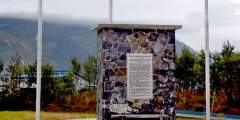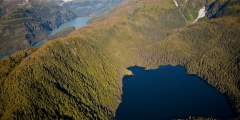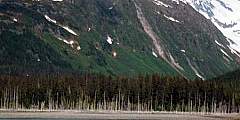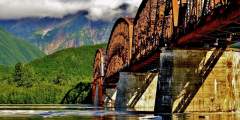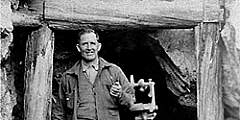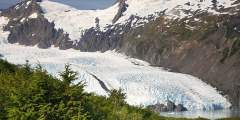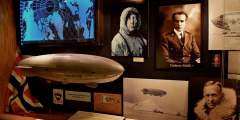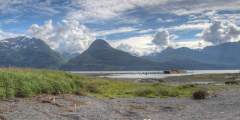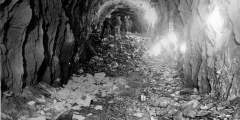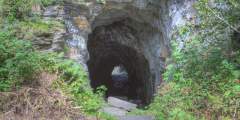Prince William Sound Historic Park or Site
Show Map
Historic Park or Site
In 1943, The Army Corps of Engineers built a monument commemorating the effort of building the 2.5 mile long tunnel through the solid rock of Maynard to realize the vision of Whittier as a year-round ice-free port. The monument was recently restored in a new location with the original plaque.
About 75 Miles Southeast of Anchorage
Believe it or not, but this area used to be covered by tall trees!
Glaciers are formed when more snow accumulates than melts through the seasons. The weight of the snow creates pressure that turns snowflakes into dense, rivers of ice that shape the land.
Construction of this early-1900s bridge cost a whopping (at the time) $1.4 million, which earned it the nickname Million Dollar Bridge. But the bridge quickly earned its keep, allowing the railroad to haul copper from Kennicott to the port of Cordova.
The area of Whittier has long served as passage between Prince William Sound and Turnagain Arm. The Alaska Engineering Expedition envisioned a rail line out to this largely unsettled area back in 1914, but it was the U.S. Army that made Whittier where and what it is.
Whittier was built as a deepwater port and railroad terminus to transport fuel and supplies during World War II. Come inside the Anchor Inn where a small but fascinating museum gives a glimpse of Whittier’s interesting history.
This was the original port and city of Valdez. The city was moved to its current location 4 miles down the road after it was devastated by the 1964 Good Friday Earthquake.
This railroad tunnel was hand-cut starting in 1905. Nine companies were battling to take advantage of the short route from the coast to copper country. Progress on the tunnel was interrupted and after a gun battle, construction halted and the tunnel was never finished. You can read about the tunnel and these events in Rex Beach’s novel, The Iron Trail.

